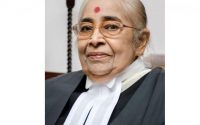$100 Website Offer
Get your personal website + domain for just $100.
Limited Time Offer!
Claim Your Website NowDon’t chase or obstruct two-wheeler riders, Kerala HC tells cops.
Source – newindianexpress.com
KOCHI: Coming down heavily on police officers and motor vehicle inspectors chasing two-wheeler riders in the name of vehicle check and for not wearing helmets, the Kerala High Court has observed that the police officers are not expected to physically stop vehicles by jumping into the middle of the road.
The court suggested that it is high time they used equipment like digital camera, traffic surveillance camera, mobile phone camera or even hand-held video cameras to detect traffic offences. The court made the observation while granting bail to an 18-year-old petitioner from Malappuram.
The police alleged that the accused and his friend were riding a bike without wearing helmets when a police team signalled them to stop. However, the youths rammed the bike on the left leg of a policeman in an attempt to escape. The motorcycle went on to hit a car coming from the opposite side and the rider and his friend fell on the road.
The petitioner argued that had the motor vehicle inspector not jumped into the middle of the road to catch hold of the handle bar of the bike, the accident would never have happened. The court said the incident occurred solely because of the antiquated methods still being used by the motor vehicles department. If cameras are used for checking, there will be foolproof evidence to initiate legal action against the offender. If a person drives at breakneck speed without wearing a helmet or if he does not stop his vehicle on being signalled to do so, the registration number can be recorded and details of the vehicle transmitted through wireless or any other mode and he can very well be intercepted.
“If the rules permit, barricades can also be placed to slow down the vehicles. The motor vehicle inspectors or police officers will be well advised to carry out the checks in pre-announced and well-marked fixed points as stated in the circular issued by the state police chief in 2012. The objective is not to catch people by surprise but to educate the people about safety habits,” observed the court.
The court further observed that the officers are not expected to try to physically stop vehicles by jumping into the middle of the road. “Under no circumstances shall a two-wheeler rider be pursued in a ‘hot chase’ for booking him for not wearing a helmet as this is likely to put the life of the officer and the offender in peril. “Several lives have been lost because of such adventurous acts,” the court added.
Use signalling devices to stop vehicles:
HC The court pointed out that the Motor Vehicles (Driving) Regulations, 2017, have detailed how vehicles have to be stopped by a police officer in uniform or an authorised officer of the state government. The regulation says that the officer may stop a motor vehicle by giving a signal using a technical device on the vehicle or a signalling disc or red light for verifying the certificate of fitness of the vehicle or for collecting required information in respect of the vehicle or the driver or other occupants of the vehicle.
Therefore, the rules specifically provide for stopping a vehicle by using signalling devices and not by physically obstructing the passage of vehicles. The court noted that though, as per the 2012 circular, the police officers and other officers empowered by the state government have been exhorted to use digital means for detecting traffic-related cases. It appears that those directions remain on paper and have not yet been implemented.
COURT STANCE It is high time they used equipment like digital camera, traffic surveillance camera, mobile phone camera or even hand-held video cameras to detect traffic offences. Under no circumstances shall a two-wheeler rider be pursued in a ‘hot chase’ for booking him for not wearing a helmet as this is likely to put the life of the officer and the offender in peril
If cameras are used for checking, there will be foolproof evidence to initiate legal action against offender



